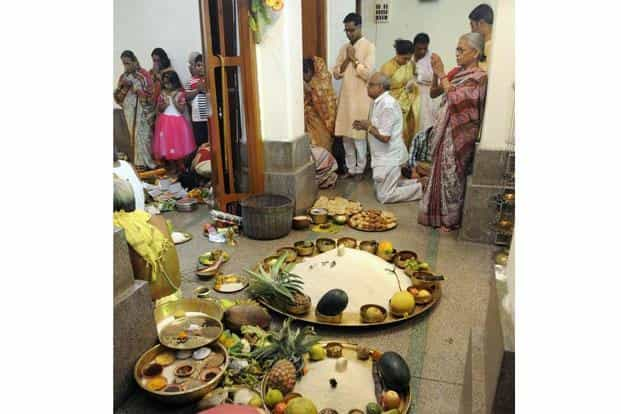Jasprit Bumrah's back injury - Understanding biomechanics
 |
| Photo credit: Sanjit Misra @sanjitmisra |
Indian cricket team’s star pacer Jasprit Bumrah has been ruled out of the upcoming men’s Twenty20 World Cup in Australia. Bumrah, who was earlier ruled out of the ongoing series against South Africa with a back injury, was under assessment at the National Cricket Academy (NCA) in Bengaluru. On Saturday, the Indian coach, Rahul Dravid, said that he depends on experts at NCA to update him about Bumrah’s recovery and progress and if the pacer has any chance of making the T20 World Cup squad.
Utpal Nadiger, a co-founder of the Cricket Revolution, is a biomechanics specialist. He has played cricket at various levels and represented Karnataka in under-16 and under-19. Utpal has also played first division in Bangalore. A fast bowler himself, Utpal has faced back and other injuries, which come with bowling continuously at a certain pace and strength. Currently, Utpal works with fast bowlers, helping them with strength and conditioning, and preparing with the correct actions while bowling faster and accurately. He is based out of London.
“Every BCCI release or every report that I have seen says back injury. They are not harping on the stress fracture. He had a stress fracture in 2019 which kept him out for a while. I am not entirely sure if this is a stress fracture. If it is, and if there is confirmation, which I have not seen in words. I have got multiple articles, even official releases, and there is nowhere it mentions stress fracture. It only says back injury,” Utpal clarifies.
According to Utpal, what Bumrah likely has is an overuse injury. However, when asked about Bumrah's unique bowling style, and how it affects the bowler in biomechanical terms, Utpal says the injury isn’t a result of anything in isolation.
“Bumrah has a very unique action. He does not have much of a long run-up, and actually puts a lot of force on his lumbar spine when he releases the ball because that is where he generates most of his pace. It makes it much harder for bowlers like Bumrah to come back continuously and deliver in a format like Test cricket consistently.”
Biomechanics is the maths and science behind movement. With the use of biomechanics, one can learn how to prevent injuries and optimise performances. There are two components of biomechanics — kinematics and kinetics. Kinetics involves force, and kinematics is movement.
Performance and injury are the primary two key factors on why biomechanics is being used in cricket today. Firstly, how can a player get better and faster, and how can they do as much as possible and optimise performance. Secondly, how to avoid injury — for example, how a player can avoid fracturing his lumbar spine, how they can reduce the chance of stress fracture, prevent hamstring injury, etc.
He adds, “Again, this kind of injury, it will not show up all of a sudden. It has been around like six to eight months. Injury due to over usage is something that comes up and shows really late and you cannot do much about it. Stress fractures are annoying because you have to rest.”
“It is not like zero or one, right? I don't think that it is a case of this or that. It cannot be one particular thing. It is kind of both. All bowlers today suffer from overload. Even Mohammed Shami, Siraj and others suffer from the high load.”
“However, injuries can be amplified when your action is in a manner that puts more load on susceptible areas. That is the problem with bowlers like Bumrah and Joffra Archer because they have unique action which reduces their threshold of load that they need to take rest. Or they need to take a break. Their breaking point is also much lower than other bowlers because of the uniqueness of their action.”
Utpal narrates an incident during India’s tour of England in 2021. “I was at Trent Bridge and listening to Sky Cricket commentary, and Michael Holding was comparing Mohammed Shami and Bumrah. He mentioned how Shami runs in almost twice as Bumrah runs but then the pace is almost the same. Bumrah hops, skips, jumps and releases it; Shami runs in at almost 70 per cent of his sprint speed, and the pace is still the same. Holding talks about the biomechanics research substantiated by the fact that Bumrah’s arm is hyperextended, and that is why he can afford to do that.”
“Honestly, it is difficult for most bowlers to correct it immediately because they would have bowled millions of balls in the same action. It is tough to correct it at that age compared to correcting the action when you are 12-18. It is easy for you to grasp and implement biomechanics-wise in your teens. For example, teaching someone to squat at the age of 12 and someone at the age of 33; it is harder for the latter. It is because of how human beings are designed. And that is an issue that bowlers like Pandya, Bumrah and Archer will face. But there needs to be a trade-off. That is where load management comes into play,” Utpal adds.
As of today, Utpal states, “It could be because they don't run in fast enough, which is why the momentum generated puts a lot of pressure on the back, heel and front foot contact. It could also be just an extra point. The other point could be the fact that between games when they bowl, their recovery isn’t good enough. That amplifies as well because your fatigue and threshold are much lower.”
So, how do bowlers like Bumrah handle load management? “Research papers in Loughborough University and other places study biomechanics. Some suggestions are that bowlers should not bowl more than 39 hours a week, etc. But like a blanket threshold and advice like that, without considering the practicalities cannot be done. This is where coaches will tell researchers that it is not possible because the player is playing Test cricket and he has to bowl 45 overs in the game maybe.”
In cricket, biomechanics is mainly used in injury prevention or correcting a player’s action (without changing their natural action). Utpal shares the example of Cameron Green, who had to correct his action to prevent himself from further injuries.
“He had many stress fractures. With the help of the team at Cricket Australia, using the inputs from a biomechanics consultant, he was able to correct his action. As a result, he learnt how to bowl quick and prevent further injuries. Another example is Pat Cummins. He was out of the team for almost six years, and with the help of a biomechanist and slight tweaking of his action, he was able to correct himself.”
In India, however, the demand and need for biomechanics are not as high as in England or Australia. Utpal believes the reason behind this is, “For a team like England, they need someone like Stuart Board to continue playing for a few more years because they do not have the abundant availability of bowlers like India. That is why in India, you won’t see people visit the lab for biomechanics profiling the way I have seen it happen in England.”
Biomechanics is a significant part of rehabilitation. Even for a physio to conduct their role better, they need to understand biomechanics. A rehabilitation process includes or is substantiated by biomechanics research and study. Physios today are well versed in sports biomechanics. Most sports medicine courses have the basics of biomechanics covered.
“It is essentially the skill coach, the strength and conditioning coach and the physio working together using the data provided by the biomechanist in the preparedness side of things which helps the player not only prevent injuries but optimise performance.”
The late England cricketer Frank Tyson was one of the earliest pioneers of biomechanics in cricket. “Typhoon Tyson” had spent quite some time with the National Cricket Academy (NCA) in the early 2000s. Tyson and John Harmer introduced biomechanics and the basics of science to the coaching staff at NCA during their stay.
Biomechanics may have come a long way since the days of Tyson, but the inclusion in everyday cricket hasn’t been at a progressive rate compared to that of countries like England and Australia. Also, biomechanics is mainly used for prevention, and injury has mostly helped bowlers in preparing. No readily available data states that biomechanics has been implemented to help fielders and wicketkeepers. There are data that sports analysts use to study fielders and wicketkeepers, but the involvement of biomechanics in it is almost negligible.
 Reviewed by Sudatta
on
October 04, 2022
Rating: 5
Reviewed by Sudatta
on
October 04, 2022
Rating: 5






























